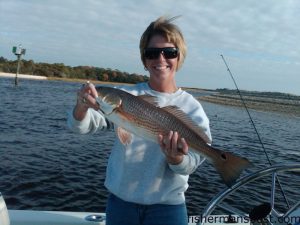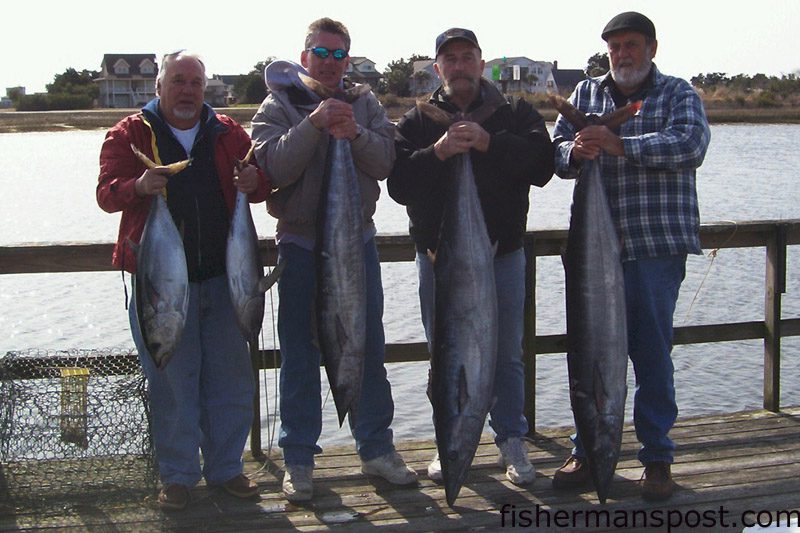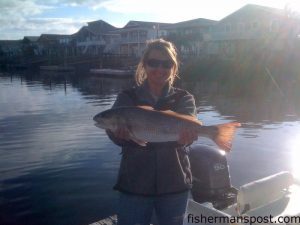North Myrtle Beach March 11, 2010

Amber Kasey, of Goldsboro, NC, with a 23" red drum that fell for a D.O.A. shrimp at the Calabash Crossroads.
Mark, of Shallow Minded Fishing Charters, reports that anglers have been catching red drum in the shallows all winter long, and the action is still solid. Anglers have been releasing double-digit numbers of fish many days (and they’re large for inshore winter reds, too, running 22-30”). Dead sticking Gulp shrimp and crabs on 1/4 and 1/8 oz. Mission Fishin’ jigheads in deeper holes in the shallow creeks has been producing the bulk of the action, and anglers need a shallow draft boat to get back in the areas where the reds are holed up.
As the water temperature rises over the coming month, the reds will push out of the deeper holes and begin actively feeding on the mud flats in the area.
Warmer water will also spur the spring trout bite into gear. April is typically when Little River-area anglers catch their largest specks of the year, and Billy Bay or D.O.A. shrimp imitations in chartreuse and glow colors are the lures to cast for them unless anglers can luck into some live shrimp. The Sunset Beach Bridge is a reliable spring spot for the specks.
Some keeper flounder should also be working their way into the mix over the next month.
Patrick, of Capt. Smiley’s Fishing Charters, reports that red and black drum are feeding around inshore structure like the Sunset Beach Bridge, on shallow flats in the area, and in deeper (2-3’) holes in the small, shallow creeks. Some schools of reds have also been working in the ICW.
Gulp baits on light jigheads or pieces of shrimp will attract attention from the black and red drum.
Once the water temperature hits about 54 degrees, the area trout bite should pick up. D.O.A. and Gulp shrimp will fool the specks, but live shrimp are even better, and they’ll grow easier to come by with the warming weather as well. Drifting a live shrimp under a float down the edge of a drop-off in the ICW or creeks is the best way to hook up with one of the big spring specks.

Capt. Tom Dixon, David McKethan, Ron Magadila, and Eddie Davenport with a brace of blackfin tuna and wahoo they hooked while trolling around the Steeples and Blackjack Hole with Green Machines and black/purple Ilanders. They were fishing out of Holden Beach on the "Salty Lady."
Larry, of Cherry Grove Pier, reports that the water is about eight degrees cooler than usual for this time of year, and the fishing has suffered as a result. Sand sharks and some small whiting are providing about the only action for pier anglers right now.
The good news is that the spring weather should raise the water temperature fairly quickly, and anglers can look forward to the appearance of more and larger whiting, bluefish, red and black drum, and some flounder once the water hits 55 degrees. Bottom rigs baited with shrimp or live baits will produce action when the predators show up.

